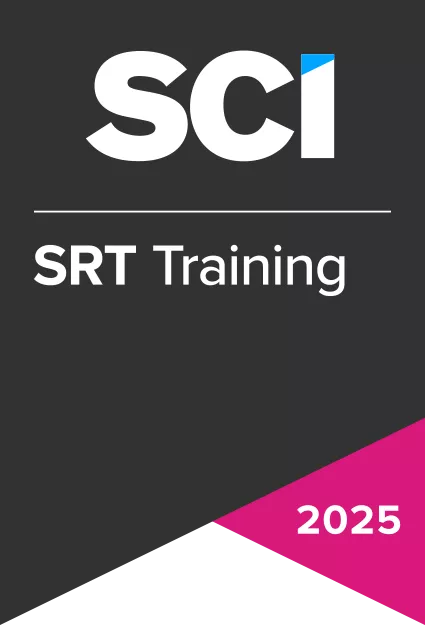Now in its fifth edition, SCI’s SRT Training for New Market Entrants offers a comprehensive, hands-on overview of how to originate, structure, and execute a capital relief trade. Following multiple sold-out sessions, this two-day course is the most practical way to gain deep, actionable insight into the risk sharing market.
For new issuers and investors, the SRT space offers huge opportunity — but significant barriers to entry remain. From securing internal approvals and understanding regulatory frameworks to structuring transactions and selecting the right partners, success demands clarity and confidence across the deal lifecycle.
This training covers it all: key decision points, regulatory engagement, investor targeting, structuring techniques, and post-closing management. Delivered by current market practitioners, it offers real-world experience you won’t find in textbooks — and equips you to speak with authority internally and externally.
Bonus: Immediately after the training, you’ll have the chance to attend SCI’s Risk Sharing Summit – the flagship event for the SRT market. It’s the perfect setting to reinforce your learning and connect with over 400 senior practitioners.
Please note: Summit attendance is optional and subject to an additional charge.
Discounted rate: £2,250 + VAT for the full two-day training
Event Date
Location
A&O Shearman, One Bishops Square, London E1 6AD
Register Your Place - £2,250 + VAT
Agenda - day 1
Registration Starting Off
Starting Off
New issuers, especially smaller banks, typically face two sets of challenges when exploring whether to execute a capital relief trade. The first challenge is achieving senior management buy-in regarding the benefits of synthetic securitisations and marshalling the necessary resources to support such an issuance. The second challenge is providing sufficient visibility on a portfolio for an investor to re-underwrite it, including preparing a substantial amount of historic default and loss data. This module outlines all of the factors a prospective CRT issuer will need to consider when putting together a feasibility study and business case proposal for their board.
Speakers

Jesper Skoglund
Balance Sheet Optimisation
The Basel 3.1 (also known as Basel 3 Endgame and Basel 4) reforms are set to fundamentally reshape the banking landscape. Arguably the most significant impact on capital requirements will arise from the implementation of the output floor, which will cap the benefit that can be obtained from internal models and drive inflation in RWAs. As such, the output floor could radically change the way banks manage capital, including by managing it at an overall portfolio level. This module highlights the operational and cultural changes being driven by Basel 3.1, in terms of the processes for calculating capital requirements and how capital is perceived and understood within a business
Speakers

Jonas Bäcklund
Lunch Break
Structuring
Capital relief trades are structured in several formats, employing different structural features to achieve a variety of outcomes. This session will introduce the CRT structures most commonly used by practitioners and discuss how structuring choices drive risks for originators and investors in each case. We will then explore certain core transaction features, including amortisation profiles, termination events, synthetic excess spread and homogeneity criteria.
Speakers

Leanne Banfield

Matthew Monahan
Regulations as they apply to structuring
The regulatory framework for CRTs in Europe has evolved since the implementation of the EU Securitisation Regulation in January 2019, culminating in the inclusion of SRT transactions in the STS regime. The EBA’s 2020 SRT report also brought much-needed clarity around how to achieve risk transfer and gain regulatory approval for a trade. This module will explore a selection of key regulatory requirements as they relate to structuring and documenting an SRT deal, as well as how they impact investor and regulatory engagement.
Speakers

Robert Bradbury, Alvarez & Marsal
Break
Credit Events and Loss Settlement
Failure to pay and bankruptcy are the two standard credit events for CRTs, although restructuring has also appeared to a limited extent following the Covid-19 crisis. This module addresses the scope of credit events definitions and loss settlement mechanisms, including quantifying the availability of protection, the timing of protection payments and verification methods.
Speakers

Ed Parker
Day 2
Breakfast
Modelling CRTs
The structural complexity and statistical nature of CRTs lend the asset class to quantitative modelling, especially in light of the uncertainties represented by amortisation, replenishment and call mechanisms. This module seeks to assess the extent to which these elements affect performance and drive risks, explain certain risk parameters and show how downs
Speakers

Ken Sutter
Operational Management & Reporting
In this session we will cover the key aspects related to the operational management of SRT transactions. This will include: waterfall calculations (including replenishment, handling of triggers, management of defaults) as well as reporting towards investors and regulators. We will discuss key aspects related to ESMA templates, COREP reports and other reporting requirements.
Speakers

Andras Vajda
Break
Issuer Perspective
This session will explore the issuer considerations and negotiating processes that drive portfolio selection, structuring choices and transaction pricing. We investigate why a bank may decide to execute a syndicated versus bilateral, funded versus unfunded and synthetic versus true sale transaction depending on the reference portfolio.
Speakers

Francois Roos
Lunch
Unfunded Protection
The utilisation of unfunded protection in CRTs continues to rise, both as a complement to funded synthetic tranches and in terms of fully unfunded transactions. From a (re)insurer perspective, the SRT product can be appealing for a variety of reasons, while banks are increasingly seeking to broaden and diversify their SRT distribution channels. This session will explore the motivations behind executing unfunded deals, the efficiencies of employing various SRT distribution options and other regulatory, accounting and tax aspects to consider when planning a transaction.
Speakers

Daria Burger

Nicola Mondone
Investor View
Gain insight into how PGGM, active in this field since 2006, approaches investing in Credit Risk Sharing transactions, laying out the foundations on which its investment approach has been built and sharing the knowledge built over time. During this module, PGGM’s approach to due diligence, structuring, pricing and monitoring will be discussed, flagging where investors should pay specific attention and highlighting the ‘things to consider’ in relation to transaction terms. The objective is to contribute to transparency on relevant risk and return drivers and how they can be analysed and assessed under the motto: ‘it’s fine to take risks, as long as you know which ones you take’.
Speakers

Joost Hoogeveen
The North American Opportunity
While Europe has long been the pioneer of CRT transactions in terms of both issuing banks and investors, the North American market is beginning to catch up. Canadian banks rushed to issue after the OFSI brought forward to 1 January 2023 the implementation of Basel 4 and the output floor in the jurisdiction. Meanwhile, the US Federal Reserve served to green-light risk transfer with its clarification of the definition of CLNs in September 2023. This module outlines the opportunity set that is emerging across the region and the factors that differentiate it from the European experience.
Speakers

Mark Kruzel, PIMCO
Trainers

Andras Vajda

Daria Burger

Ed Parker

Francois Roos

Jesper Skoglund

Jonas Bäcklund

Joost Hoogeveen

Ken Sutter

Leanne Banfield

Mark Kruzel, PIMCO

Matthew Monahan

Nicola Mondone

